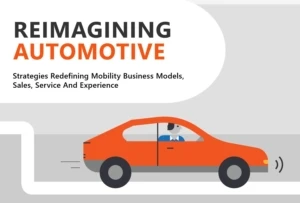
Category: Automotive
Explore:


Microsoft brings leading automotive, mobility, and transportation solutions to CES
There is an abundance of transformation taking place across the automotive ecosystem. By 2030, fully 50 percent of the automotive industry’s projected $6.6 trillion in revenue will come from disruptive technology or business models1. Traditional industry players are being disrupted, fueling the shift to electric and digital.
Autonomous drivers—Start your engines!
At the famed Indianapolis Motor Speedway, it’s certainly not unusual to see the sleek, aerodynamic shape of an Indy racecar exploring the limits of the track piloted by one of the world’s best and fastest drivers. But to see the same, without a driver?
How data is transforming the automotive retail experience
Driving is data. By 2030, virtually all new cars will be connected devices, datacenters on wheels. For drivers, those lights and gauges on the dashboard, images on the screen, and cameras mean it’s safer and more efficient than ever to get around the block or across the country.
Microsoft automotive momentum: looking forward, back, and beyond
As I reflect on our customers’ and partners’ achievements in such trying times, their successes and innovations inspire me. Looking ahead, I’m both optimistic and excited as the industry continues its forward momentum. I’d like to highlight a few recent examples of our collaboration with leaders in the industry.
Resilient operations fuels the future of mobility
Through its four-decade partnership with leaders in the automotive industry, there’s one core learning that Microsoft continues to see: with challenge comes increased opportunity for innovation. For vehicle makers, this has meant turning the business model upside down, redefining an industry, and working at a blistering pace transforming from traditional manufacturers to mobility service providers.
Bringing agility and alignment into engineering
Think of an automotive manufacturer and you might picture huge factories, large production lines, robotic assembly, and innumerable mechanical parts. But it’s what lies underneath all these things that’s driving the future of automotive and mobility and the companies behind it: software.
The inside track: the intersection of technology and mobility
Who doesn’t love the clean lines, the bold curves, the shiny finish of a new car? But just as exciting is what’s going on under the hood. The rise of EVs, cloud-connected technologies to help drivers avoid collisions, communications systems that become as integral to our lives as our phones—it’s all happening. Here. Now. Today.
5 strategies to accelerate digital transformation in automotive
The automotive industry is being reshaped by several forces such as technology changes, customer expectations, and more recently with the unexpected impact of Covid-19. The vehicle is fundamentally changing from purely mechanical engineering into a software-defined connected mobility platform that needs to respond to the rapidly changing priorities of modern vehicle buyers.
Partnering with Microsoft to accelerate your future mobility services
The automotive industry is undergoing digital transformation at an unprecedented rate. The widely acknowledged forces driving this change include new and emerging players in the market that have a strong technology baseline and are growing at an enviable rate.
How OEMs are adapting with intelligent supply chains
In the past few months, Covid-19 has disrupted the automotive industry. Automotive original equipment manufacturers (OEMs) have paused production sending financial shockwaves through supply chains. Governments have required non-essential workers to stay at home. Around the world, people have deferred plans to buy new vehicles.
